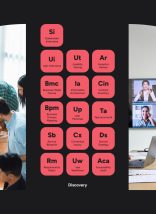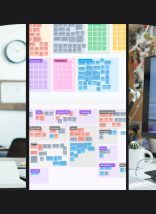In a previous post, Why Original Web Content Matters to Your Business, I explained why creating original web content is important. In short, original content plays a significant role in conversion optimization and the organic search performance of your site.
In this post, I’ll focus on how to create original content. Writing original web content can be challenging. However, it is not impossible and becomes easier with practice and a plan. Here are some key things to keep in mind to help you get started:
Identify topics where you have expertise. If people are paying for your product or service, you know something of value to others. You don’t have to be the world’s top expert on the subject, you just need to have information of interest to your audience. Provide a valuable perspective by combining your knowledge with your unique insight.
Know your audience. Make sure you know what you are writing, for whom, and why. An excellent way to really know your target audience and how to address them is through developing Personas; it takes a little time, but the insights gained are invaluable – so much so that we perform Persona Workshops as a first step for all our clients.
Plan ahead. List topics you can write about, do some keyword research, develop a schedule around product releases, calendar events, etc. Build in a draft, review, and publish cycle; this is called an editorial calendar and is very helpful to maintain regular content production.
Start writing. Starting can be the hardest part, but the most important. Write a draft, then rework it as you see fit; it is much easier to work with once it is out of your head and on paper (or screen).
Structure for online consumption. Writing for the web is very different from writing a short story or novel; web content must match the way users scan websites:
- Start with your key point (don’t bury the lead)
- Write in small, digestible chunks (provide individual answers)
- Use headlines and headings (make it easy to scan)
- Write in active voice (be approachable, not remote)
- Write in plain language (be accessible to all readers)
Edit. Edit for grammar, spelling, accuracy, references, flow, voice, and web consumption, etc. Have someone else review it if you can. Finally, remember the adage “less is more” – edit down; omit needless words.
Creating Original Web Content: An Example
Some websites obviously require lots of textual content, such as traditional marketing sites (sometimes called “brochure” sites), while others don’t because they focus on providing very specific functionality. There are certainly variations based on purpose, but all sites need some amount of content and often more than you might think.
For example, Atlantic BT is working with a client to design a website interface for a large, complex data set; the primary purpose of the site is to provide access to reports based on this data to a few well-defined groups of users like researchers and policy-makers. This could initially seem to be a straightforward delivery of a specific application to users who will know how to find it and what to do with it, thus requiring little explanatory content.
However, the Persona Workshop portion of our Discovery process identified that almost every user type had a critical need for explanatory content of some type, ranging from descriptions of the reports and data structures, to how-to’s for accessing the data, FAQs, and more.
As a result of the Persona workshop, it was clear the site would have to include a significant focus on creating the textual content needed to support fully successful user engagement with the reports and data sets. Although the primary objective for site visitors would be the data and reports, those would not necessarily be of value without the supporting content to explain what they were and how to access and use them.
Additionally, the content will provide a valuable secondary function – it will greatly enhance the search engine rankings for the website. Search engines can not access, nor could they digest, the raw data or reports that are the primary content of the site; the textual content will have to tell the search engines what the site is all about and can provide to the visitor.
In these two posts we have demonstrated the need, the value, and the method for generating quality, original content for your website. If you follow the steps above, you will certainly see improved traffic to your site and enhanced user interaction once they arrive. Happy writing!





